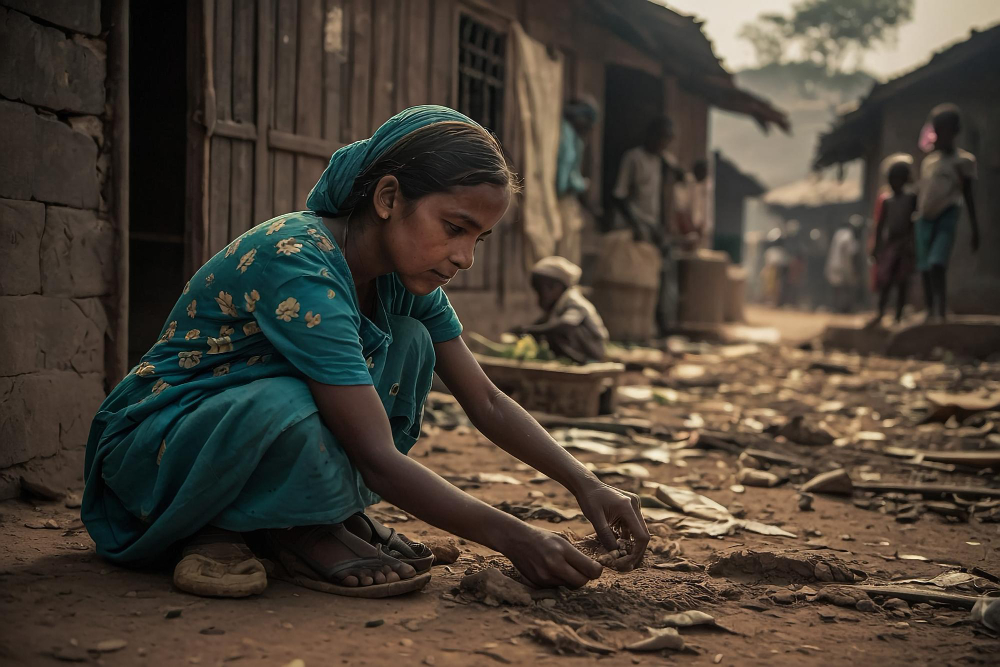August 22, 2025

Nepal Airlines in Hongkong. Credits: Wikimedia Commons/N509FZ
Every year, Nepalis spend billions sending their children abroad in search of world-class education. Many don’t return, but those who do discover that the home they dreamed of contributing to has little space for their skills.
In 2023, Nepal saw one of its highest-ever outflows of students, with thousands leaving for universities and research programs abroad. The Department of Immigration (DoI) recorded more than 1.6 million departures that year, but just over 1.26 million arrivals.
Meanwhile, in countries that attract Nepali students, the imbalance was stark. The data says Australia welcomed more than 105,000, yet fewer than 70,000 returned that year. Japan saw over 82,000 leave, with only 45,000 coming home. The United States recorded nearly 68,000 departures against 46,500 returns, and the United Kingdom saw just 30,500 returns from more than 53,000 who left. Canada had the sharpest divide, with just 4,658 returning compared to 23,289 departures.
Behind each of these numbers is a life shaped by ambition, sacrifice, and the hope of building something better. For many, a degree is not the end but a bridge to the next stage abroad. And for those who do return, the path home can be unexpectedly uneven.
Research from the Centre for the Study of Labour and Mobility (CESLAM) reveals how foreign-earned degrees, despite their prestige, do not always open doors as widely as expected.
Some return to find that their global perspectives and technical skills are met with polite interest but little action. They face slow recognition, burdensome licensing, and a job market where connections matter more than qualifications. The transition from an environment of possibility to one of hesitation can feel like a quiet heartbreak.
Sharing their experience, a 28-year-old graduate who returned after a U.S. master’s described how reality struck hard: “One of the compromises that I’ve felt quite apparent is the wage disparity. In the US, as a full-time graphic designer, I earned approximately USD 5,000 per month. Here, the same job description pays closer to USD 1,000.”

Representative AI-generated image of a student feeling overwhelmed and discouraged while searching for a job. Credits: Gemini AI
Of course, there is an offset with lower living expenses in Nepal, but that gap is still hard to ignore. And the market here does not entirely value the job itself, they added.
“Here, graphic designers typically earn from NRs. 25,000 to NRs. 60,000 for a more senior experience. Then again, employers also demand unrelated skills—animation, 3D modeling, social media, content creation—which makes jobs harder to secure.”
Such a job market compels foreign returned students to seek opportunities that are remote and/or linked with foreign companies as a side hustle. “The wages are better, but only by a couple of thousand rupees than the domestic rate,” they add.
Additionally, they add, “Perhaps it is a sense of the West vs. the East, or just outsourcing. Such foreign companies tend to overwork personnel in such roles. Employees have little to no authority over company decisions, work with the nose to grinder with horse blinders on, and fear immediate layoff at any given moment.”
Another returnee, a designer who had studied in both journalism and design and built a career in New York, shared how her first job back in Nepal felt like striking gold, “As a designer, I might’ve gotten the dream job for anyone in Kathmandu, which is working for an art gallery that has plenty of freedom for exploration and is located in a very beautiful space.”
But even that came with its own set of challenges. “The pay disparity between my job in New York vs. here was a jarring reality.”
Coping with weak and outdated workplaces is another challenge they face. “Everyone seems to just want to give a brief and have things be exactly word-for-word what they said, instead of actually being strategic or creative.”
She also faced cultural and systemic barriers: “As a specialist in accessibility, change takes endless convincing and often feels like a solitary fight. And, as a woman, even asking questions can rattle the status quo. And the constant need to ‘kiss ass’ to advance is exhausting.”
Having said that, the scenario also has its benefits, where you can bring your skills and implement them in ways that are innovative in Nepal and can hopefully make you an expert quickly compared to what it would’ve been like in the U.S.
These voices echo a wider pattern. Both acknowledge the privilege of having work that is their expertise, yet both grapple with wage disparity, workplace culture gaps, and the uphill task of applying global skills in a local market that still measures value differently.
In urban centres like Kathmandu and Pokhara, opportunities exist in tech start-ups, creative agencies, or tourism ventures. Yet these cities come with high living costs and intense competition, and success often requires personal networks built over years.
For those returning to smaller towns or rural districts, the disconnect between their skills and the available roles is even greater. They face a choice between taking work far outside their field, uprooting themselves again for the city, or leaving the country once more.

While cities absorb most returning graduates, rural areas often struggle to offer skilled employment, leaving many educated returnees unable to settle back in their hometowns. Credits: Flickr
“This is not just about jobs. It is about the sense of purpose that comes with seeing one’s education make a difference,” they say. It is about the frustration of watching valuable skills sit unused while the country invests heavily in sending its young people abroad. And about the quiet loss that happens when ambition slips away, replaced by the daily grind of survival.
If Nepal wants to truly benefit from its returning graduates, it must bridge the gap between global training and local opportunities. That means faster recognition of foreign degrees, targeted hiring in sectors that can use specialised skills, and stronger ties between industries, universities, and alumni networks. Their reintegration should be seen not as a formality, but a process that shapes whether returnees stay, thrive, and contribute.
The numbers show a wide gap between those who leave and those who return. But the stories behind them show that “coming home” is not simply about arriving. It is about finding a place where knowledge, experience, and ambition can take root. Without that, Nepal risks welcoming its graduates back only as guests, rather than as the builders of its future.

By sharing valuable information and sparking inspiration, we aim to foster growth, innovation and brighter opportunities for future generations.
Contact us